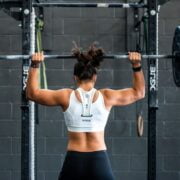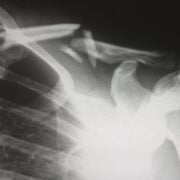
Step Up Your Game: Lower Body Strength and Stability Exercises
Having a strong and stable lower body is crucial for overall fitness and daily activities. The lower body is responsible for supporting our body weight, providing balance and stability, and generating power for movements such as walking, running, jumping, and lifting. Neglecting lower body strength and stability can lead to imbalances, increased risk of injury, and limitations in performance.
Key Takeaways
- Lower body strength and stability are important for overall fitness and daily activities.
- Squats, lunges, deadlifts, step-ups, calf raises, glute bridges, leg press, and box jumps are effective exercises for lower body strength and stability.
- Each exercise targets different muscles and aspects of lower body fitness.
- Incorporating a variety of these exercises into your fitness routine can improve your lower body strength, stability, balance, endurance, and explosiveness.
- Consult with a fitness professional to ensure proper form and technique for each exercise.
Exercise 1: Squats for Lower Body Strength
Squats are one of the most effective exercises for developing lower body strength. They target multiple muscle groups including the quadriceps, hamstrings, glutes, and calves. Squats also engage the core muscles, promoting overall stability and balance.
To perform a squat, start by standing with your feet shoulder-width apart. Lower your body by bending at the knees and hips, as if you were sitting back into a chair. Keep your chest up, back straight, and weight in your heels. Go as low as you can while maintaining proper form, then push through your heels to return to the starting position.
Variations of squats include goblet squats, sumo squats, pistol squats, and jump squats. Goblet squats involve holding a dumbbell or kettlebell at chest level while performing the squat. Sumo squats are performed with a wider stance to target the inner thighs more. Pistol squats are single-leg squats that require greater balance and stability. Jump squats add an explosive element to the exercise by incorporating a jump at the top of the movement.
Exercise 2: Lunges for Lower Body Stability
Lunges are another excellent exercise for improving lower body stability. They target the quadriceps, hamstrings, glutes, and calves while also engaging the core muscles for balance.
To perform a lunge, start by standing with your feet hip-width apart. Take a step forward with one foot, lowering your body until both knees are bent at a 90-degree angle. Keep your chest up, back straight, and weight in your front heel. Push through your front heel to return to the starting position, then repeat on the other side.
Variations of lunges include reverse lunges, walking lunges, lateral lunges, and curtsy lunges. Reverse lunges involve stepping backward instead of forward. Walking lunges are performed by taking continuous steps forward, alternating legs. Lateral lunges involve stepping to the side instead of forward. Curtsy lunges are performed by crossing one leg behind the other in a curtsy-like motion.
Exercise 3: Deadlifts for Lower Body Strength and Stability
| Exercise | Deadlifts |
|---|---|
| Primary Muscle Group | Lower Body |
| Secondary Muscle Groups | Back, Core |
| Equipment Needed | Barbell, Weights |
| Difficulty Level | Intermediate |
| Benefits | Increases Lower Body Strength and Stability, Improves Posture, Enhances Grip Strength |
| Variations | Sumo Deadlift, Romanian Deadlift, Trap Bar Deadlift |
Deadlifts are a compound exercise that targets the posterior chain muscles in the lower body, including the hamstrings, glutes, and lower back. They also engage the core muscles for stability and balance.
To perform a deadlift, start by standing with your feet hip-width apart and a barbell in front of you. Bend at the hips and knees to lower your body and grip the barbell with an overhand grip. Keep your chest up, back straight, and weight in your heels. Push through your heels and extend your hips to lift the barbell off the ground, keeping it close to your body. Lower the barbell back down with control.
Variations of deadlifts include Romanian deadlifts, sumo deadlifts, trap bar deadlifts, and single-leg deadlifts. Romanian deadlifts involve keeping your legs straighter and focusing on hinging at the hips. Sumo deadlifts are performed with a wider stance to target the inner thighs more. Trap bar deadlifts use a special bar that allows for a more upright torso position. Single-leg deadlifts are performed on one leg at a time, requiring greater balance and stability.
Exercise 4: Step-Ups for Lower Body Strength and Balance
Step-ups are a great exercise for improving lower body strength and balance. They target the quadriceps, hamstrings, glutes, and calves while also engaging the core muscles for stability.
To perform a step-up, start by standing in front of a step or platform. Place one foot on the step and push through that foot to lift your body up onto the step. Keep your chest up, back straight, and weight in your heel. Step back down with control, then repeat on the other side.
Variations of step-ups include weighted step-ups, lateral step-ups, and box jumps. Weighted step-ups involve holding dumbbells or a barbell while performing the exercise. Lateral step-ups involve stepping to the side instead of straight up. Box jumps add an explosive element to the exercise by jumping onto the step or platform instead of stepping.
Exercise 5: Calf Raises for Lower Body Endurance

Calf raises are an effective exercise for targeting the calf muscles and improving endurance in the lower body. They can be performed with bodyweight or with added resistance such as dumbbells or a barbell.
To perform a calf raise, start by standing with your feet hip-width apart. Raise your heels off the ground as high as you can, then lower them back down with control. You can perform calf raises on flat ground or on an elevated surface such as a step or platform.
Variations of calf raises include single-leg calf raises and seated calf raises. Single-leg calf raises are performed on one leg at a time, requiring greater balance and stability. Seated calf raises are performed using a seated calf raise machine or by placing a weight plate on your thighs while sitting on a bench.
Exercise 6: Glute Bridges for Lower Body Strength and Stability
Glute bridges are a fantastic exercise for targeting the glutes and improving stability in the lower body. They also engage the hamstrings and core muscles.
To perform a glute bridge, start by lying on your back with your knees bent and feet flat on the ground. Place your arms by your sides. Push through your heels and squeeze your glutes to lift your hips off the ground until your body forms a straight line from your knees to your shoulders. Hold for a moment at the top, then lower your hips back down with control.
Variations of glute bridges include single-leg glute bridges, hip thrusts, and banded glute bridges. Single-leg glute bridges are performed on one leg at a time, requiring greater balance and stability. Hip thrusts involve using a bench or step to elevate your upper back and shoulders while performing the exercise. Banded glute bridges involve placing a resistance band around your thighs to add extra resistance.
Exercise 7: Leg Press for Lower Body Strength
The leg press is a machine exercise that targets the quadriceps and improves lower body strength. It also engages the hamstrings, glutes, and calves to a lesser extent.
To perform a leg press, start by sitting on the machine with your back against the pad and your feet on the footplate. Adjust the seat so that your knees are bent at a 90-degree angle when your feet are on the footplate. Push through your heels to extend your legs and lift the weight, then lower it back down with control.
Variations of the leg press include narrow stance leg press, wide stance leg press, and single-leg leg press. Narrow stance leg press involves placing your feet closer together on the footplate to target the inner thighs more. Wide stance leg press involves placing your feet wider apart on the footplate to target the outer thighs more. Single-leg leg press is performed on one leg at a time, requiring greater balance and stability.
Exercise 8: Box Jumps for Lower Body Explosiveness
Box jumps are a plyometric exercise that improves explosive power in the lower body. They target the quadriceps, hamstrings, glutes, and calves while also engaging the core muscles for stability.
To perform a box jump, start by standing in front of a sturdy box or platform. Bend your knees and swing your arms back, then explode upward and forward to jump onto the box. Land softly with your knees bent to absorb the impact, then step or jump back down and repeat.
Variations of box jumps include step-up box jumps, lateral box jumps, and depth jumps. Step-up box jumps involve stepping onto the box before jumping off. Lateral box jumps involve jumping laterally onto the box from the side. Depth jumps involve stepping off a box or platform and immediately jumping as high as possible upon landing.
Incorporating Lower Body Strength and Stability Exercises into Your Fitness Routine
Incorporating lower body strength and stability exercises into your fitness routine is essential for overall health and performance. These exercises target multiple muscle groups in the lower body, improve balance and stability, and enhance strength and power.
To get started, choose a variety of exercises that target different muscle groups and movement patterns. Aim to perform these exercises at least two to three times per week, allowing for adequate rest and recovery between sessions. Start with lighter weights or bodyweight exercises if you are a beginner, gradually increasing the intensity as you become stronger and more comfortable with the movements.
Remember to always prioritize proper form and technique to prevent injury and maximize results. If you are unsure about how to perform an exercise correctly, seek guidance from a fitness professional who can provide personalized instruction and ensure that you are using proper form.
By incorporating lower body strength and stability exercises into your fitness routine, you will not only improve your physical performance but also enhance your overall health and well-being. So, don’t neglect your lower body – give it the attention it deserves and reap the benefits of a strong and stable foundation.
FAQs
What are step up exercises?
Step up exercises are a type of lower body strength and stability exercise that involves stepping up onto a raised platform or step with one foot and then stepping back down with the same foot or alternating feet.
What muscles do step up exercises work?
Step up exercises primarily work the muscles in the lower body, including the quadriceps, hamstrings, glutes, and calves. They also engage the core muscles for stability.
What are the benefits of step up exercises?
Step up exercises can improve lower body strength, stability, and balance. They can also help to increase cardiovascular endurance and burn calories.
What equipment do I need for step up exercises?
You will need a raised platform or step, such as a step bench or sturdy box. You may also want to use dumbbells or other weights to increase the intensity of the exercise.
How do I perform a step up exercise?
To perform a step up exercise, stand in front of the raised platform with your feet hip-width apart. Step up onto the platform with one foot, pressing through the heel and engaging the glutes and quadriceps. Step back down with the same foot or alternate feet. Repeat for several repetitions.
Are step up exercises suitable for beginners?
Step up exercises can be modified for beginners by using a lower platform or step and performing the exercise without weights. It is important to start with a comfortable height and gradually increase the intensity as strength and stability improve.
Are there any precautions I should take when performing step up exercises?
It is important to maintain proper form and alignment during step up exercises to avoid injury. Keep your chest lifted, shoulders back, and core engaged. Avoid leaning forward or allowing the knee to collapse inward. If you have any pre-existing injuries or conditions, consult with a healthcare professional before starting any new exercise program.

















